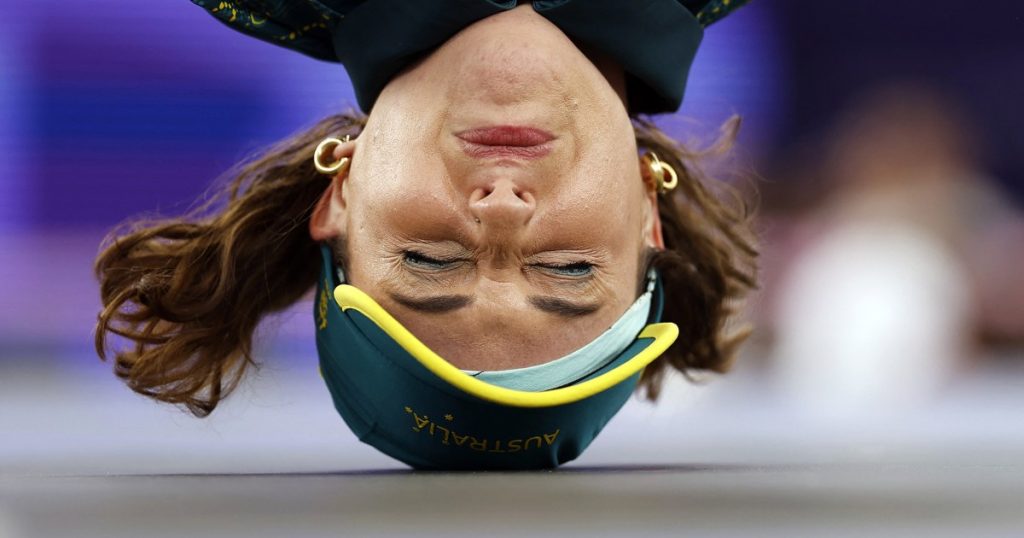Rachael Gunn, also known as Raygun, made her mark on the breaking world at the sport’s Olympic debut in Paris, despite not winning any points in three battles against competitors from the United States, France, and Lithuania. The 36-year-old university lecturer emphasized originality in her performance, which included a kangaroo hop and slow moves paying tribute to her homeland of Australia. Instead of the athletic spins and freezes typically seen in breaking, Gunn opted for a more artistic and creative approach, wearing an Australian Olympic tracksuit rather than streetwear. Her performance received a mix of ridicule and support, with some praising her for her originality while others questioned if the performance was a hoax.
Despite the criticism, Gunn’s performance has garnered support from the international breaking community and even received a shout-out from singer Adele. The head judge of the Olympic breaking competition defended Gunn, stating that she represented her country well and brought something new to the table with her inspired moves. The Australian prime minister also praised Gunn for her courage and unique approach to the sport. Gunn faced online abuse following her performance, prompting concerns about the impact of the criticism on her mental health. The World DanceSport Federation has offered mental health support to Gunn in light of the abusive comments she received.
Breaking, a sport focused on creativity, personality, technique, variety, musicality, and vocabulary, made its Olympic debut this year in an effort to appeal to a younger audience. The decision to include breaking in the Paris Olympics has been met with mixed reactions, and the sport will not be part of the Los Angeles 2028 Olympics. However, the sport’s federation is advocating for breaking to be included in the 2032 Games in Brisbane, Australia. Gunn’s unconventional performance at the Olympics highlighted the importance of originality and self-expression in breaking, showcasing her joy in the art form despite not winning any points in her battles.
Gunn’s performance, characterized by her unique approach and tribute to her Australian roots, has sparked discussions about the nature of breaking as a sport-art form. While Gunn may not have won any points in her battles, her choice to stand out and be different has resonated with many individuals in the breaking community who value self-expression and creativity. Gunn’s decision to perform in an unconventional manner, wearing an Olympic tracksuit and incorporating slow moves inspired by her surroundings, has brought attention to the diversity and originality present in the sport of breaking. As breaking continues to evolve and gain recognition on the global stage, performers like Gunn are pushing the boundaries of what the sport-art form can achieve.
Despite facing criticism and online abuse, Gunn has remained resilient and has pushed back against her detractors. She has emphasized the importance of embracing differences and staying true to oneself in the face of adversity. Gunn’s determination and courage have garnered support from various individuals, including the Australian breaking team and the World DanceSport Federation, who have offered her mental health support. As breaking continues to gain visibility and popularity, Gunn’s performance at the Olympic debut in Paris serves as a testament to the power of originality and self-expression in the sport, inspiring others to embrace their unique approach to breaking.













